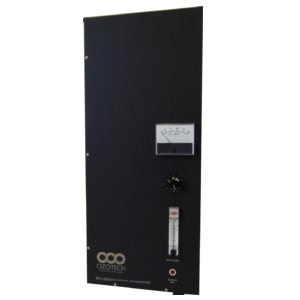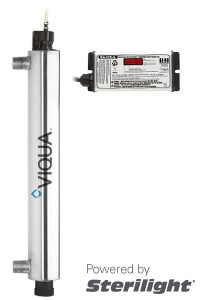

The access to clean drinking water is an essential requirement across the world. This can only be achieved when you have access to a reliable sanitation system. Sanitation systems for water treatment is a method of controlling or eradicating a biological issue. These are typically mechanical or chemical in nature. Ultra-filters, for example, would be a mechanical method as it physically removes suspended matter down to 0.02 micron. Chlorine and bromine, for example, is a chemical method that comprises two or more elements that react with the enzymes and proteins of a biological contaminant. Ozone, ultraviolet light (UV), ionization can be considered a hybrid method as they do not use chemicals nor physically remove biological contaminants. Instead, they use radiation, charged particles, or unstable molecules, which does not fit the definition of a chemical either.
There are various types of sanitation or water disinfection systems used across the world. The following are a few prominent ones.
As the concerns for DPBs grow, more chemical-free alternatives have gained popularity. The most popular are ozone, UV, and ionization. They are discussed below in detail:
The choice of the right sanitation system will entirely depend on your application requirements. Intec offers many options to address sanitation needs for homes, pools, business, and agricultural applications. We provide filters, ozonation systems, U/V lights, and chemical injection systems to our clients. Each of these systems has their own benefits, which can be made best use depending on your application. Speak with a consultant regarding your concern and Intec can give you the details and which technology would work best for you.

Ultraviolet Germicidal Lamps, or more commonly called UV lights, are very effective at killing bacteria and viruses. UV light disinfection is not a new technology and found its first use in medicine by Niels Fensen in 1903 to fight tuberculosis. Shortly after in 1910, the first UV Disinfection System for water treatment was implemented in Marseilles, France. What Is UV Disinfection System? An UV disinfection system is a water treatment method to kill dangerous waterborne pathogens. It harnesses that same power as the sun and uses a specific wavelength of non-visible light creating ultraviolet radiation. The UV radiation that the sun produces can be divided into three main groups: UV-A, UV-B, and UV-C. The ultraviolet (UV) water purification technology uses UV-C which is the shortest of all the UV wavelengths and it most effective at the 254 nm range. How Does UV Disinfection Work? Ultraviolet disinfection systems use a short wavelength on light between 200-300 nanometers that penetrates microbes and attacked the nucleic acids and disrupting their DNA. When these vital cellular functions are unable to perform, the microbe can not replicate and is considered inactive or dead. All suspended matter must be removed for UV water disinfection as the light must come into direct contact with the microorganism. Otherwise, the shadowing effect could allow some pathogen to pass by being unaffected. Applications of UV Disinfection System UV disinfection systems are used in ventilation systems for airborne pathogen control. Remote robotics are also used for surface/air sanitation in healthcare. Medium-pressure UV disinfection systems are currently used for wastewater treatment. Similar systems also being considered by the dairy industry for waste milk and other applications. The most commonly used ultraviolet (UV) water purification systems are of the low-pressure variety for residential and commercial applications. Benefits of UV Disinfection System UV...